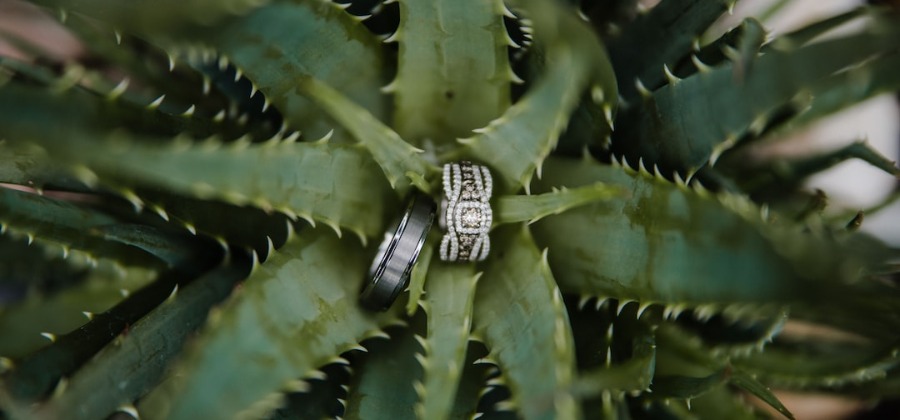Aloe vera is a succulent plant currently experiencing a rebirth in popularity. With its many health benefits, people are starting to realize just how versatile this plant can be. One of the benefits of aloe vera is its ability to soothe and heal skin conditions.

One of the easiest ways to enjoy this benefit is by using aloe vera gel as a topical treatment. You may need to water your aloe plant more frequently than you think. Check out this blog post for more information on how often to water your aloe plant and get the most out of its therapeutic properties.
How Often Should I Water My Aloe Plant?
Watering your aloe plant is important to keep it healthy and thriving. There are a few things to consider when watering your aloe plant, including the weather conditions and the size of the plant.
When watering an outdoor aloe plant in summer, water it frequently enough not to let the soil dry out completely. Aim for every other day or so, depending on the severity of the heat.
For indoor plants in warmer climates, water them once a week or less unless there has been a significant decrease in growth. Check the soil often for moisture content and only allow it to get bone dry before watering again.
Wait until there is a definite indication of frost before watering your aloe plant in winter. If you live in an area that experiences cold winters, give your aloe plant at least 12 hours of overnight frost before watering.
Water regularly but not too much; allowing the soil to become saturated will cause root rot. In very cold climates where freezing temperatures occur even once or twice a year, withhold water altogether until there is evidence of green growth after two weeks without rain.
How Does an Aloe Plant Reproduce?
Aloe plants are succulents that require very little water to thrive. Aloe plants can survive in dry conditions for extended periods. However, Aloe plants do need regular watering to maintain their health and prevent problems like root rot or fungal overgrowth.
To figure out how often your Aloe plant needs water, first make sure the soil is moist but not soggy. Water the plant if the soil feels drier than it should be. Watering frequency should gradually increase as the soil becomes drier. Too much water at once can lead to root rot.
How to Water an Aloe Plant
watering an aloe plant is a question that comes up quite often, especially because the plant does not seem to need as much water as other plants. However, proper watering can help your aloe thrive and maintain its color. Follow these guidelines to get the most out of your aloe plant:
Watering Frequency
The first step in watering your aloe is deciding how often to water it. Aloes can go several weeks without water, so start by checking the soil every two to four days and adjust as needed. If you notice the leaves turning yellow or brown, the plant is getting too much water, and you should back off for a few days.
When Should I Water My Aloe Plant?
Keeping your aloe plant healthy requires regular watering, but there’s no one-size-fits-all answer. Follow these guidelines to water your aloe plant appropriately:
- Check the moisture level of the soil before watering. If it is dry, water sparingly; if it is moist, give the plant a good soaking.
- Give your aloe plant a thorough watering twice a week in warm and once in cool weather, especially during summer when its growth is fastest.
- Don’t overwater your plant; allow the potting mix to become slightly wet but not soggy. When roots are plentiful, and soils are well drained, weekly watering may be reduced to every other week or even every two weeks.
What Needs to be Done to Water an Aloe Plant
Watering an Aloe plant is a crucial part of keeping it healthy. To water an aloe plant, you will need to first understand how often it needs water and what type of water it prefers.
An easy way to determine how often your aloe needs watering is to look at its leaves. If the leaves are wilting or drooping, it needs more water. The aloe needs less water if the leaves are green and firm.
Water your aloe plant only when the soil feels dry to the touch – do not water it when it is wet! Once a week is usually enough for most plants but check with your plant if you have questions.
Aloes prefer slightly acidic to mildly alkaline soils; they are not very tolerant of high salt levels in the soil or water. You can add acidifying or alkalinizing materials to the soil around your plant, but do so slowly over several weeks so that the plant can adapt (this is especially important if you add amendments directly to the potting mix).
A good way to measure pH levels around your aloe is with a home pH meter (see Resources). Keep in mind that some plants – such as succulents – naturally grow more slowly in low light, which may require additional watering even when their foliage appears dry.
Frequently Asked Questions
What is the best way to water an aloe plant?
Aloe plants do not like to be watered frequently. They prefer a shallow watering method done every few days rather than a deep watering method done daily. Remember that your aloe plant will also tell you when it needs water – if it starts to droop or become shriveled up, it likely needs more water.
How do I clean my aloe plant?
Remove brown or dried-up leaves, cut off damaged or dead branches, and then rinse the plant thoroughly.
Can I keep my aloe plant in direct sunlight?
No, aloe plants do not like direct sunlight. They need plenty of indirect light to thrive.
Can I fertilize my aloe plant?
No, aloe plants are not typically fertilized.
Should I prune my aloe plant?
Aloe plants need to be pruned every few years to keep them healthy. Remove any dead or damaged branches, and give the plant a good rinse.
Conclusion
Aloe plants are native to arid climates, so it’s not surprising that they need a lot of water to stay healthy. However, if you live in a dry climate or your aloe plant is getting low on water, there are ways to tell whether or not it needs more.
One way to tell is by looking at the leaves; if they are turning yellow and starting to decay, your aloe plant probably needs more water. You can also try giving your aloe plant a little bit of soil every week and watering it regularly; this will help improve its nutrient levels and keep it healthy overall.




Leave a Reply